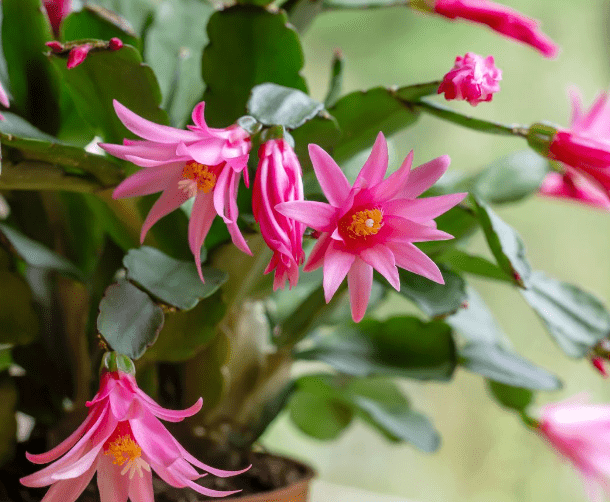
If you want to add a little colour to your house or garden, the Easter cactus is a great option, especially around the Easter holiday when this tropical cactus is noted for its stunning and profusion of star-shaped blooms. Flowers of this native to the Brazilian jungles range from white to scarlet to purple. The Easter cactus is well known for having a long lifespan and being simple to grow, making it a popular choice for both novice and seasoned houseplant lovers.
Care
Light
As a native understory plant in woodlands, the Easter cactus is accustomed to growing in spots that are slightly protected from the sun. Indirect sunlight is the best type of lighting for this plant.

Soil
Easter cactus thrive in a variety of permeable soil mixtures that are high in organic matter and allow for adequate root ventilation because they are epiphytes. It’s best to use a combination of coco coir, peat moss, perlite, and orchid bark. To keep the soil nutrient-rich, treat the soil frequently with compost or other organic fertilizers.
Although Easter cacti prefer humid environments, the humidity levels seen in typical homes are ideal for them. If your house is especially dry, it’s a good idea to add more humidity with a humidifier or a pebble tray.
Fertilizer
As heavy feeders, Easter cacti are said to benefit from routine fertilization. Starting about two months after the plant has completely ceased flowering, apply a balanced fertilizer once a month until you need to get the plant ready for its bloom phase. By applying compost or other organic fertilizers on an annual basis, the soil may be kept nutrient-rich.
Table





